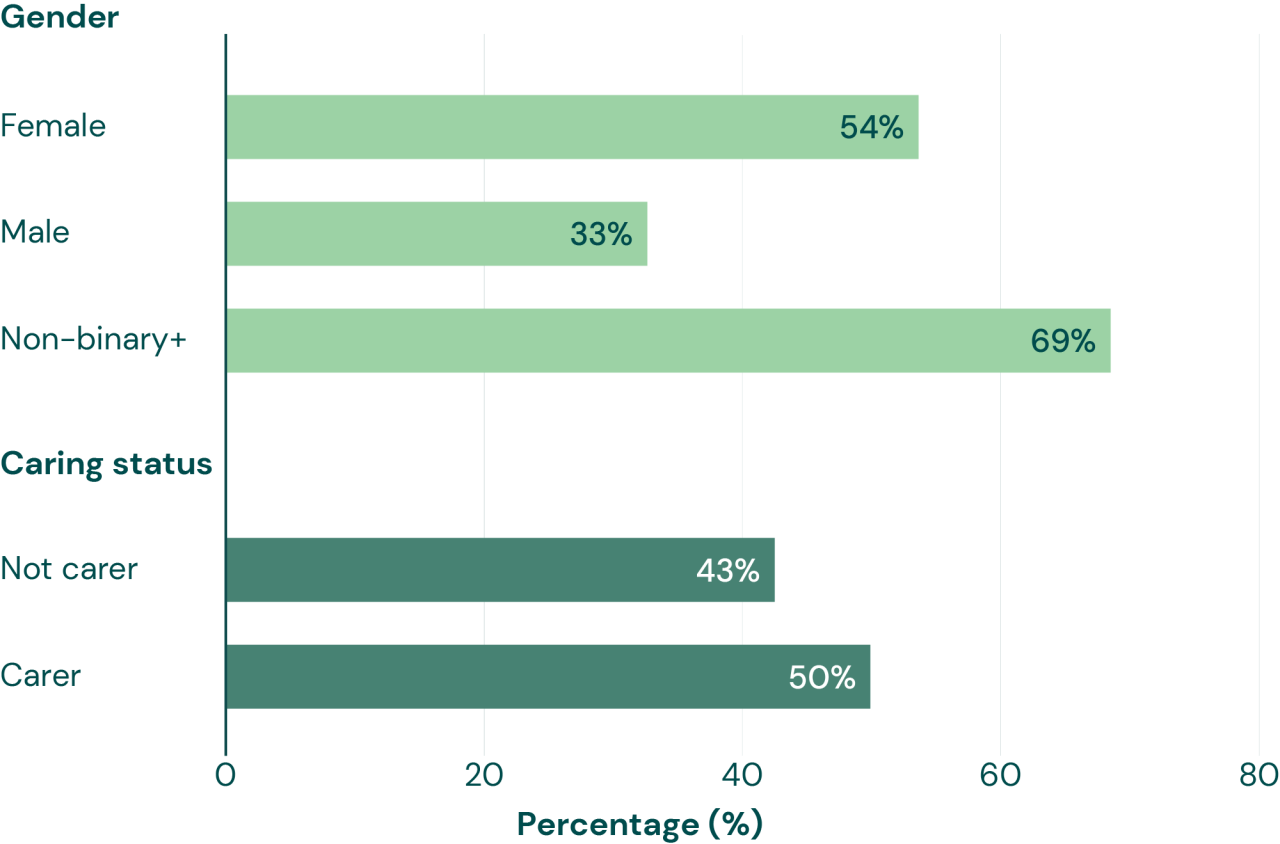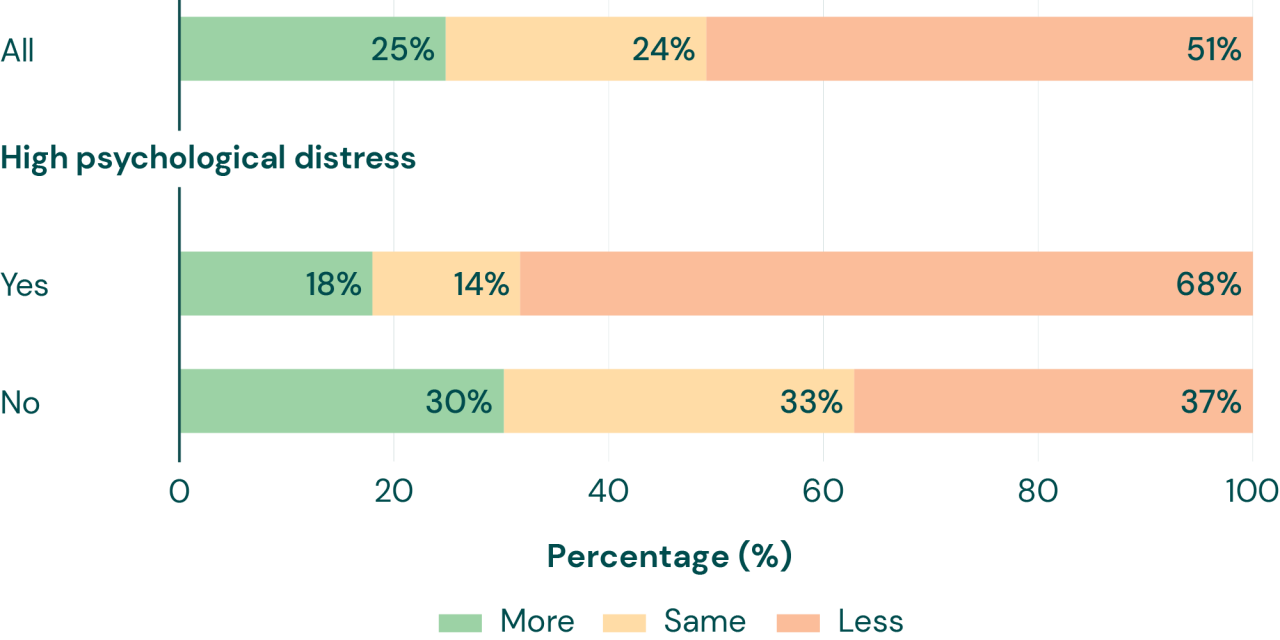Note: this blog includes mentions of self-harm and suicide
The toll of the COVID-19 pandemic on mental health has been well documented. From being isolated from friends and family during lockdowns to missing out on sitting formal GCSE after examinations were cancelled, key parts of the lives of young people were disrupted, and the sense of normality was lost for many months.
Thanks to the COVID Social Mobility & Opportunities study (COSMO), we are now able to look in more depth at the mental health of the ‘covid generation’ in today’s report, including how their mental health compares to previous generations. The study looks at data from over 13,000 young people from across England.
The General Health Questionnaire (GHQ-12) was a primary measure used in the survey to measure mental health. It involves a range of questions, such as whether the participant has lost sleep through worrying, felt unhappy or lost confidence in themselves. A score of 4 or above indicates high psychological distress.
Participants also answered questions about mental health support from their school and how the pandemic had impacted their motivations to study. The depth of this study allows us to compare these responses by background characteristics, and indicators of socio-economic background, including gender and school type.
Overall mental health
We have found that over 2 in 5 (44%) report elevated psychological distress (using GHQ-12). This figure is 9 percentage points higher than the 35% reporting distress at age 17-18 in the Our Future cohort study (2017) and 21 percentage points higher than the 23% at age 16-17 in the Next Steps cohort study (based on reports in 2007), indicating a substantial increase in poor mental health for this generation.
As shown by Figure 1, females and those who identify as non-binary or in another way (grouped here as non-binary+) are more likely to report high psychological distress. Young carers were also 7 percentage points more likely to report distress compared to those who were not carers.
Figure 1: Percentage with high psychological distress by gender and caring status
Bullying
Just under a quarter (24%) of young people said they experienced bullying at school or college. Again, those who identified as non-binary+ were more likely to report this, at 54%, compared to 27% of females and 20% of males. Differences were additionally seen by school type – those at a state comprehensive school were more likely to say they had been bullied (24%) compared to students in state grammar schools (18%) and independent schools (16%).
Self-harm and suicide
We also found the female and non-binary+ students were more likely to report self-harm. Whilst 17% of participants overall said they had self-harmed in the past year, 61% of non-binary+ individuals reported this. This figure for females was double the figure for males, at 23% compared to 11%.
8% reported that they had hurt themselves on purpose in an attempt to end their life. 35% of those who identify as ‘non-binary+’ said this, compared to 11% of females and 5% of males.
Impact on education
Our findings also indicate that large numbers of young people were unsatisfied with their school’s mental health support during the pandemic. 47% of students overall said the support offered was not good, with nearly one in five (18%) saying support was ‘not at all good’. Half of the pupils from comprehensive or grammar schools rated their school’s mental health support as not very good or not at all good compared to around a quarter (23%) of those attending independent schools.
Just over half of young people (51%) said that they are now less motivated to study and learn as a result of the pandemic, with a quarter saying they feel a lot less motivated. As shown in Figure 2, those with high psychological distress were 31 percentage point more likely to say they were less motivated, at 68% compared to 37% of other respondents.
Figure 2: Proportion reporting change in academic motivation by psychological distress
We also saw that those with high psychological distress were more likely to report negative views on their academic progress due to the pandemic and that their post-pandemic plans have changed. For instance, 45% said they had fallen behind their classmates, compared to 27% of those below the GHQ-12 threshold. 71% said their career plans had changed in some way, compared to 50% for those with GHQ-12 scores below the threshold.
Whilst we cannot be sure that findings here are related to the COVID-19 pandemic’s effects, it is clear that the many of this generation of young people are suffering with their mental health.
Moving forward
One of the great things about cohort studies like COSMO is that they allow us to follow a representative group over time. In the next wave of the study, when participants are aged 18 and are about to embark on university, employment or another new path, we will be able to see if their mental health has improved, stayed the same, or deteriorated further.
To build on the findings of our research briefing, it is key that we continue to investigate how the mental health of children who have grown up through a global pandemic has been impacted. Furthermore, other researchers can continue to use COSMO data to dig deeper into the drivers of poor mental health. This is vital to inform policy development, that not only supports young people, but individuals across the country who are suffering.

